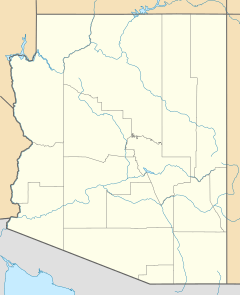Komak Wuacho, Arizona facts for kids
Quick facts for kids
Komak Wuacho, Arizona
|
|
|---|---|
| Country | United States |
| State | Arizona |
| County | Pima |
| Elevation | 2,011 ft (613 m) |
| Time zone | UTC-7 (Mountain (MST)) |
| • Summer (DST) | UTC-7 (MST) |
| Area code(s) | 520 |
| FIPS code | 04-38630 |
| GNIS feature ID | 24484 |
Komak Wuacho is a small community located in Pima County, Arizona, in the United States. It's known as a "populated place," which means it's a recognized area where people live, even if it's not an official city or town. The name "Komak Wuacho" comes from the Tohono O'odham people.
Contents
What is Komak Wuacho?
Komak Wuacho is what we call a "populated place." This means it's a group of homes or buildings where people live. It's not a big city with its own mayor or city council. Instead, it's part of a larger area, in this case, Pima County.
Unincorporated Area Explained
A "populated place" like Komak Wuacho is often an unincorporated area. This means it doesn't have its own separate local government. Services like roads, police, and fire protection are usually managed by the county government.
Where is Komak Wuacho Located?
Komak Wuacho is found in the southwestern part of the United States. It is specifically located in Pima County, within the state of Arizona. This area is known for its desert landscapes and warm climate.
Elevation and Surroundings
The community sits at an elevation of about 2,011 feet (or 613 meters) above sea level. This elevation means it's higher than many flat areas. The surrounding land is often flat, which is important for understanding the meaning of its name.
What Does the Name "Komak Wuacho" Mean?
The name "Komak Wuacho" has a special meaning. It comes from the Tohono O'odham language, which is spoken by the native people of this region. In their language, komadk weco means "flats beneath."
Connecting Name to Place
This name likely describes the area's geography. It suggests that Komak Wuacho is located in a flat area, possibly at the base of hills or mountains. This connection between the name and the land is common in many native languages.



